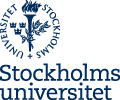Description
One of the main problems of understanding strongly
correlated systems is that there is no universally
accepted sufficiently simple reference system available for
their description. The main workhorse of condensed matter
physics, namely independent fermions, is not a good place to
start.
A better starting point is operators that are closer to creating
the actual excitations in the interacting system.
These can be identified by studying the equations of motion
(EOM) for some chosen class of operators.
In such a scheme there are a number of issues that must be
dealt with:
1) Which class of operators should be used in the
construction?
The conventional approach is to use intuition from the physics
to select the operators.
2) The next step is to identify or generate the operator
dynamics.
Ideally this dynamics is a reasonable approximation to reality.
In practice this implies that the EOM have to be closed in a
way that keeps the theory physical, for example keeping
spectral weights positive. Also this step is not unique.
3) Once 1) and 2) are settled the
EOM have to be solved and the averages that are necessary
to construct the Green’s functions must be computable from
within the theory itself.
In our work, we suggest to use all operators that affect up to
a pair of sites in the construction, making the scheme as
unbiased as possible.
This also has the advantage that the necessary averages can
be calculated within the theory.
We illustrate our scheme by an application to the Hubbard
model.
EOM technique introduction: Avella & Mancini,
http://arxiv.org/abs/1112.1103
Mott physics introduction: Phillips,
http://arxiv.org/abs/1001.5270
Primary author
Johan Nilsson
(Uppsala University)

